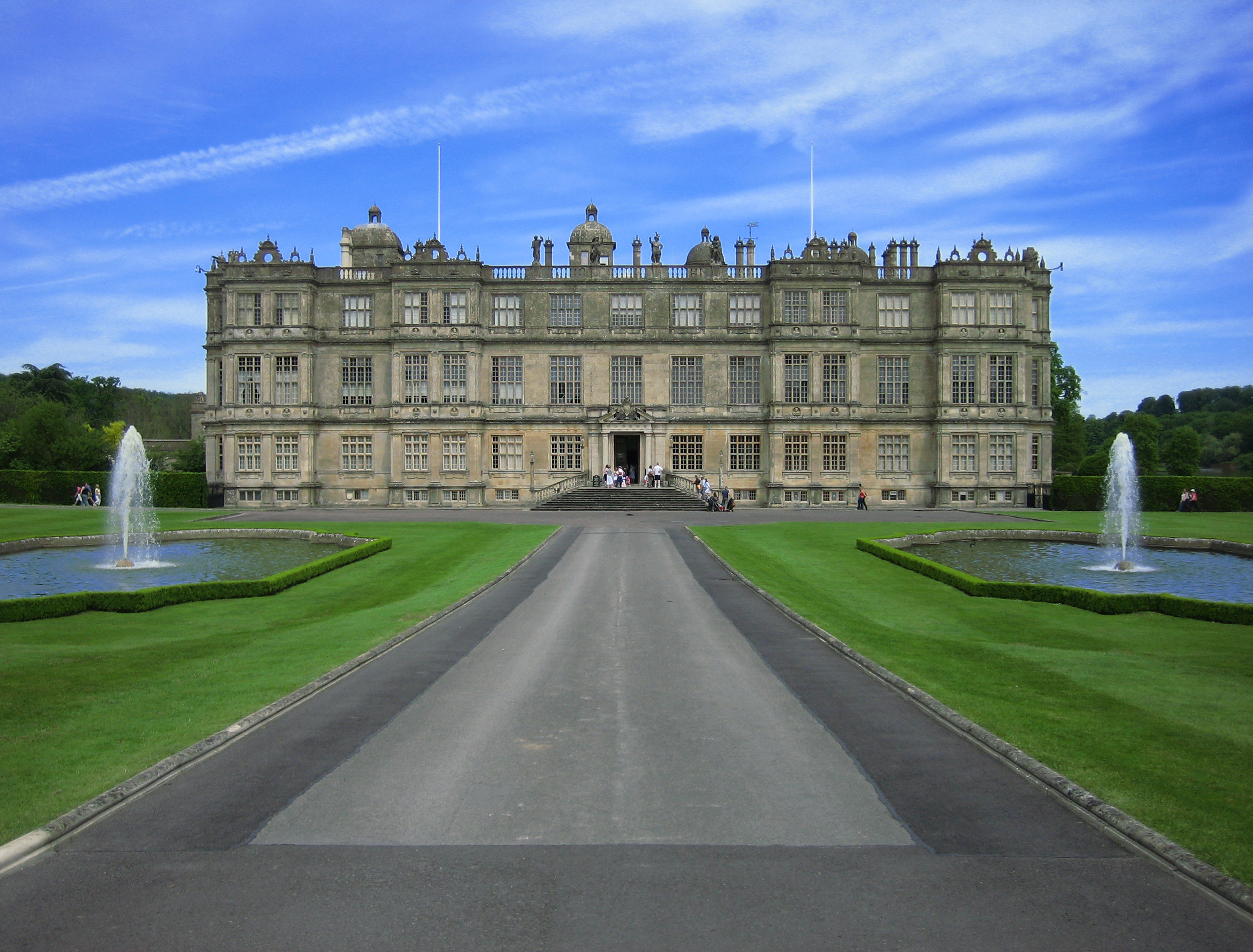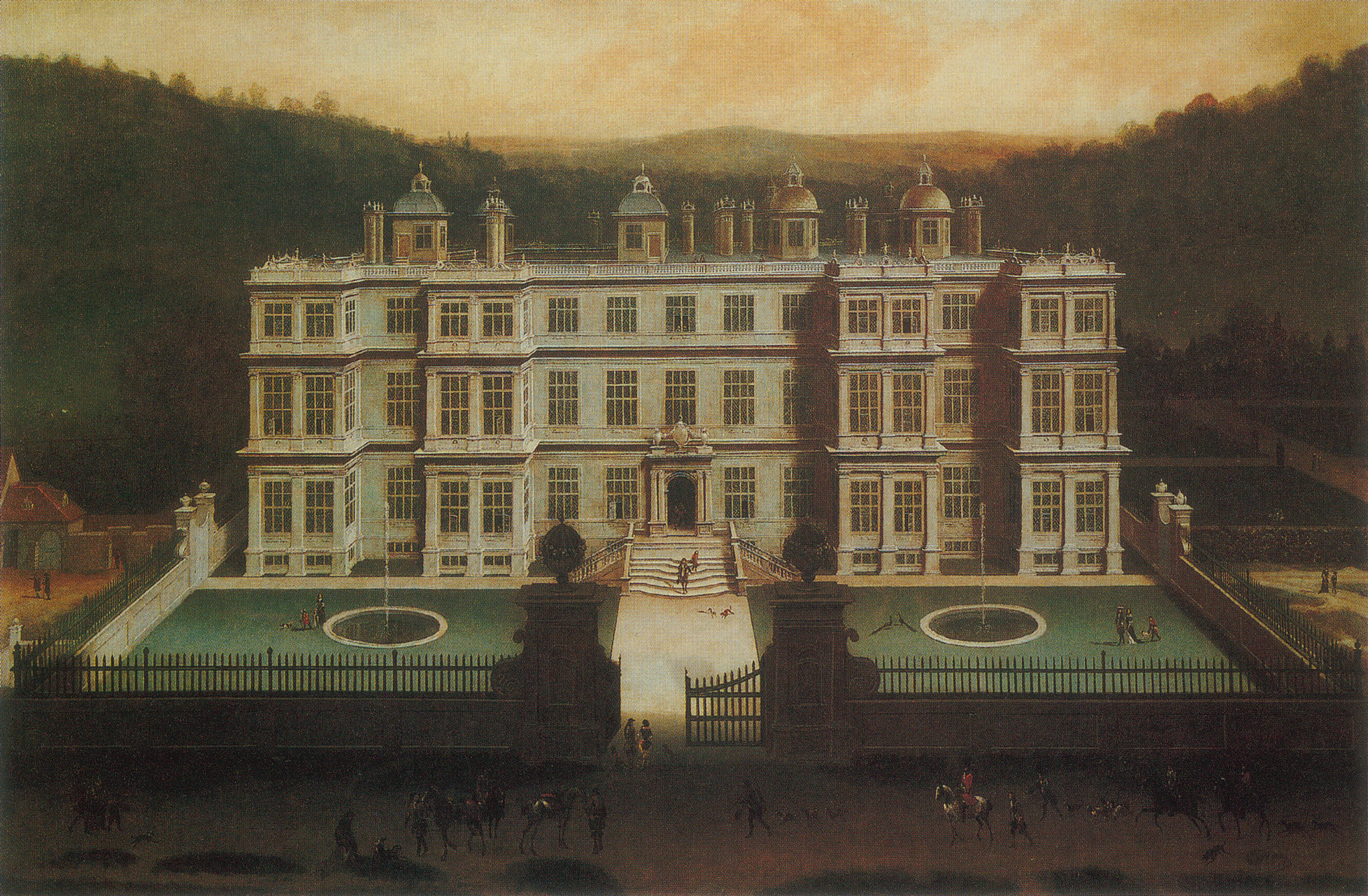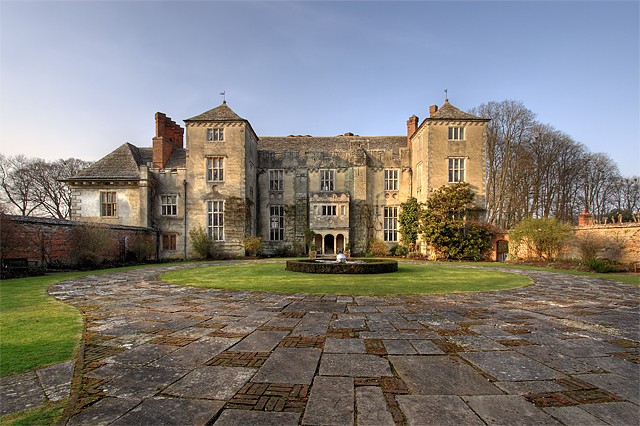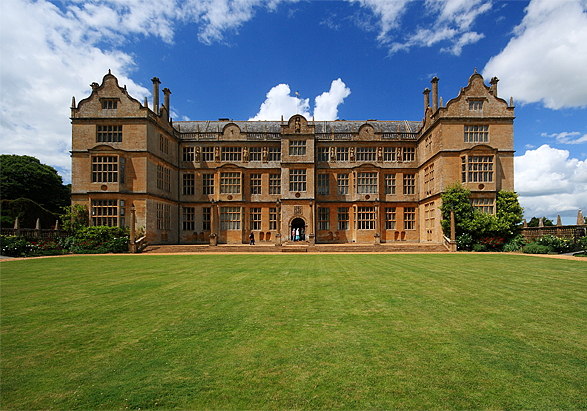|
John Of Padua
John of Padua (recorded active between 1543–1557) was an elusive figure of the English Renaissance who was employed at the courts of Henry VIII and his successor, Edward VI, during a period in which numerous foreign architects and artisans arrived in England, bringing with them the new concepts and evolutions of the Italian Renaissance as it spread across Europe. He disappears from the records after 1557.Summerson 1963:6. John of Padua, John Thorpe and Robert Smythson were near contemporaries all working in the currently evolving English Renaissance style in an age of often poor record keeping. As a result, their works have become blurred and there is debate over whose hand was responsible for which building, and John of Padua has become a mysterious and enigmatic figure in English architectural history. Sir John Summerson warned of this phenomenon, however, that "when it comes to the test of building accounts we find that very little indeed can be ascribed to foreign hands." ... [...More Info...] [...Related Items...] OR: [Wikipedia] [Google] [Baidu] |
Longleat House
Longleat is an English stately home and the seat of the Marquesses of Bath. A leading and early example of the Elizabethan prodigy house, it is adjacent to the village of Horningsham and near the towns of Warminster and Westbury in Wiltshire, and Frome in Somerset. The Grade I listed house is set in of parkland landscaped by Capability Brown, with of let farmland and of woodland, which includes a Center Parcs holiday village. It was the first stately home to open to the public, and the Longleat estate has the first safari park outside Africa and other attractions including a hedge maze. The house was built by Sir John Thynne and designed mainly by Robert Smythson, after Longleat Priory was destroyed by fire in 1567. It took 12 years to complete and is widely regarded as one of the finest examples of Elizabethan architecture in Britain. It continues to be the seat of the Thynn family, who have held the title of Marquess of Bath since 1789; the eighth and present Marquess is ... [...More Info...] [...Related Items...] OR: [Wikipedia] [Google] [Baidu] |
Longleat
Longleat is an English stately home and the seat of the Marquesses of Bath. A leading and early example of the Elizabethan prodigy house, it is adjacent to the village of Horningsham and near the towns of Warminster and Westbury in Wiltshire, and Frome in Somerset. The Grade I listed house is set in of parkland landscaped by Capability Brown, with of let farmland and of woodland, which includes a Center Parcs holiday village. It was the first stately home to open to the public, and the Longleat estate has the first safari park outside Africa and other attractions including a hedge maze. The house was built by Sir John Thynne and designed mainly by Robert Smythson, after Longleat Priory was destroyed by fire in 1567. It took 12 years to complete and is widely regarded as one of the finest examples of Elizabethan architecture in Britain. It continues to be the seat of the Thynn family, who have held the title of Marquess of Bath since 1789; the eighth and present Marquess is ... [...More Info...] [...Related Items...] OR: [Wikipedia] [Google] [Baidu] |
John Caius
John Caius (born John Kays ; 6 October 1510 – 29 July 1573), also known as Johannes Caius and Ioannes Caius, was an English physician, and second founder of the present Gonville and Caius College, Cambridge. Biography Early years Caius was born in Norwich and was educated at Norwich School. In 1529, he was admitted as a student at what was then Gonville Hall, Cambridge, founded by Edmund Gonville in 1348, where he seems to have mainly studied divinity. After graduating in 1533, he visited Italy, where he studied under the celebrated Montanus and Vesalius at Padua. In 1541 he took his degree as a physician at the University of Padua. In 1543 he visited several parts of Italy, Germany and France and then returned to England. Upon his return from Italy he Latinised his surname, an action which although self-aggrandising, was somewhat fashionable at the time. Career Caius was a physician in London in 1547, and was admitted as a fellow of the College of Physicians, of which he ... [...More Info...] [...Related Items...] OR: [Wikipedia] [Google] [Baidu] |
Caius College, Cambridge
Gonville and Caius College, often referred to simply as Caius ( ), is a constituent college of the University of Cambridge in Cambridge, England. Founded in 1348, it is the fourth-oldest of the University of Cambridge's 31 colleges and one of the wealthiest. The college has been attended by many students who have gone on to significant accomplishment, including fifteen Nobel Prize winners, the second-highest of any Oxbridge college after Trinity College, Cambridge. The college has long historical associations with the teaching of medicine, especially due to its prominent alumni in the medical profession. It also has globally-recognized and prestigious academic programmes in law, economics, English literature, and history. Famous Gonville and Caius alumni include physicians John Caius (who gave the college the caduceus in its insignia) and William Harvey. Other alumni in the sciences include Francis Crick (joint discoverer of the structure of DNA with James Watson), James Chad ... [...More Info...] [...Related Items...] OR: [Wikipedia] [Google] [Baidu] |
Dunster Castle
Dunster Castle is a former motte and bailey castle, now a country house, in the village of Dunster, Somerset, England. The castle lies on the top of a steep hill called the Tor, and has been fortified since the late Anglo-Saxon period. After the Norman conquest of England in the 11th century, William de Mohun constructed a timber castle on the site as part of the pacification of Somerset. A stone shell keep was built on the motte by the start of the 12th century, and the castle survived a siege during the early years of the Anarchy. At the end of the 14th century the de Mohuns sold the castle to the Luttrell family, who continued to occupy the property until the late 20th century. The castle was expanded several times by the Luttrell family during the 17th and 18th centuries; they built a large manor house within the Lower Ward of the castle in 1617, and this was extensively modernised, first during the 1680s and then during the 1760s. The medieval castle walls were mostl ... [...More Info...] [...Related Items...] OR: [Wikipedia] [Google] [Baidu] |
Wadham College
Wadham College () is one of the constituent colleges of the University of Oxford in the United Kingdom. It is located in the centre of Oxford, at the intersection of Broad Street and Parks Road. Wadham College was founded in 1610 by Dorothy Wadham, according to the will of her late husband Nicholas Wadham, a member of an ancient Devon and Somerset family. The central buildings, a notable example of Jacobean architecture, were designed by the architect William Arnold and erected between 1610 and 1613. They include a large and ornate Hall. Adjacent to the central buildings are the Wadham Gardens. Amongst Wadham's most famous alumni is Sir Christopher Wren. Wren was one of a brilliant group of experimental scientists at Oxford in the 1650s, the Oxford Philosophical Club, which included Robert Boyle and Robert Hooke. This group held regular meetings at Wadham College under the guidance of the warden, John Wilkins, and the group formed the nucleus which went on to found the Royal ... [...More Info...] [...Related Items...] OR: [Wikipedia] [Google] [Baidu] |
Cranborne Manor
Cranborne Manor is a Grade I listed country house in Cranborne, Dorset, in southern England. The manor dates back to around 1207/8, and was originally a hunting lodge. It was re-modelled for The 1st Earl of Salisbury in the early 17th century. The main seat of the earls and marquesses of Salisbury is Hatfield House in Hertfordshire, and Cranborne Manor is often the home of the heir to the title, who uses the courtesy title Viscount Cranborne. The house The house is a Grade I listed building, being "extremely important both as a rare survival of early C13 domestic architecture and as a fine early C17 country house" remodelled, after 1608, by William Arnold who also worked on Dunster Castle in this period and built Montacute House and Wadham College, Oxford. The original Manor house was actually built for King John in the 12th century and was used as a royal hunting lodge. It is constructed of ashlar, rubble and flint with ashlar dressings. The roofs are tiled and slated, with ... [...More Info...] [...Related Items...] OR: [Wikipedia] [Google] [Baidu] |
William Arnold (architect)
William Arnold ( fl. 1595–1637) was an important master mason in Somerset, England. As a stonemason and architect, William Arnold was head of a migrating band of professional Somerset stonemasons who worked on many houses. Arnold was known to have been living in Charlton Musgrove near Wincanton in 1595 where he was church warden. His first known commission was for the design of Montacute House in c1598. This is one of the finest Elizabethan mansions in the country and was designed for Sir Edward Phelips. Other works include the remodelling of a hunting lodge at Cranborne to form a manor house for Robert Cecil, 1st Earl of Salisbury in 1607–1610. He was then commissioned in 1610–1613 by Dorothy Wadham, a Somerset resident, to design and oversee the building of Wadham College, Oxford. Wadham College is widely regarded as the last major public building in the UK to have been built according to the mediaeval principles of a supervising master mason. His last known work was r ... [...More Info...] [...Related Items...] OR: [Wikipedia] [Google] [Baidu] |
Montacute House
Montacute House is a late Elizabethan mansion with a garden in Montacute, South Somerset. An example of English architecture during a period that was moving from the medieval Gothic to the Renaissance Classical, and one of few prodigy houses to survive almost unchanged from the Elizabethan era, the house has been designated by English Heritage as a Grade I listed building, and Scheduled Ancient Monument. It was visited by 125,442 people in 2013. Designed by an unknown architect, possibly the mason William Arnold, the three-storey mansion, constructed of the local Ham Hill stone, was built in about 1598 by Sir Edward Phelips, Master of the Rolls and the prosecutor during the trial of the Gunpowder Plotters. Sir Edward Phelips' descendants occupied the house until the early 20th century. For a brief period the house was let to tenants, one of whom was Lord Curzon, who lived at the house with his mistress, the novelist Elinor Glyn. In 1931, it was acquired by the National ... [...More Info...] [...Related Items...] OR: [Wikipedia] [Google] [Baidu] |
Wollaton Hall
Wollaton Hall is an Elizabethan country house of the 1580s standing on a small but prominent hill in Wollaton Park, Nottingham, England. The house is now Nottingham Natural History Museum, with Nottingham Industrial Museum in the outbuildings. The surrounding parkland has a herd of deer, and is regularly used for large-scale outdoor events such as rock concerts, sporting events and festivals. Wollaton and the Willoughbys Wollaton is a classic prodigy house, "the architectural sensation of its age", though its builder was not a leading courtier and its construction stretched the resources he mainly obtained from coalmining; the original family home was at the bottom of the hill. Though much re-modelled inside, the "startlingly bold" exterior remains largely intact. Wollaton Hall was built between 1580 and 1588 for Sir Francis Willoughby and is believed to be designed by the Elizabethan architect, Robert Smythson, who had by then completed Longleat, and was to go on to des ... [...More Info...] [...Related Items...] OR: [Wikipedia] [Google] [Baidu] |
Holdenby House
Holdenby House is a historic country house in Northamptonshire, traditionally pronounced, and sometimes spelt, Holmby. The house is situated in the parish of Holdenby, six miles (10 km) northwest of Northampton and close to Althorp. It is a Grade II* listed building. History The house was completed in 1583 by the Elizabethan Lord Chancellor, Sir Christopher Hatton, who refused to sleep a night in the mansion until Queen Elizabeth I had slept there. It was one of the largest prodigy houses of the Tudor period, rivalling in size both Audley End and Theobalds, and was reputed to occupy approximately 78,750 square feet (7,300 m²), although this probably included the two great courtyards around which it was built. The facades were symmetrical, with mullioned windows and open Doric arcades, reflecting the Renaissance style of architecture gradually spreading from Italy. Hatton died in 1591. In 1607 the mansion was bought by Elizabeth's successor James I. His wife Anne of Denma ... [...More Info...] [...Related Items...] OR: [Wikipedia] [Google] [Baidu] |
Charlecote House
Charlecote Park () is a grand 16th-century country house, surrounded by its own deer park, on the banks of the River Avon in Charlecote near Wellesbourne, about east of Stratford-upon-Avon and south of Warwick, Warwickshire, England. It has been administered by the National Trust since 1946 and is open to the public. It is a Grade I listed building. History The Lucy family owned the land since 1247. Charlecote Park was built in 1558 by Sir Thomas Lucy, and Queen Elizabeth I stayed in the room that is now the drawing room. Although the general outline of the Elizabethan house remains, nowadays it is in fact mostly Victorian. Successive generations of the Lucy family had modified Charlecote Park over the centuries, but in 1823, George Hammond Lucy ( High Sheriff of Warwickshire in 1831) inherited the house and set about recreating the house in its original style. Charlecote Park covers , backing on to the River Avon. Allegedly, William Shakespeare poached rabbits and deer in ... [...More Info...] [...Related Items...] OR: [Wikipedia] [Google] [Baidu] |








